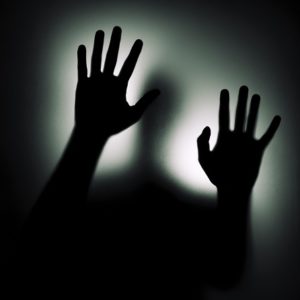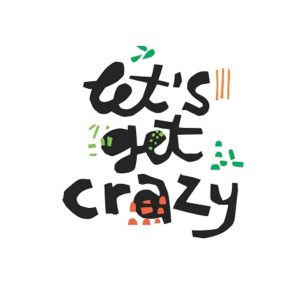 I’ve cut-back on watching TV news and other programs where the main topic is coronavirus. I am tired of feeling bombarded by the subject, tired of hearing about it. The same applies to videos concerning racial violence that are shared on Facebook or in-boxed to me by friends. I don’t watch them anymore. Although I decided to take a respite from both issues, my subconscious must not have gotten the message, because last night, I had a troubling dream that integrated both subjects.
I’ve cut-back on watching TV news and other programs where the main topic is coronavirus. I am tired of feeling bombarded by the subject, tired of hearing about it. The same applies to videos concerning racial violence that are shared on Facebook or in-boxed to me by friends. I don’t watch them anymore. Although I decided to take a respite from both issues, my subconscious must not have gotten the message, because last night, I had a troubling dream that integrated both subjects.
In my dream —
I am employed in a small office suite with my manager, Peter. We are moving an old, light-grey loveseat, to be discarded, from his office into the reception area of the suite.
As Peter goes back into his office, a burly-looking white man enters the suite and tells me that he has a new sofa outside to bring in. He is about fiftyish, 6’3″ tall, 280 pounds. On his line-backer sized body, he is wearing a wrinkled white tee shirt with prominent yellow underarm stains. His beer belly is flapping over the belt, holding up gray khakis; the pant legs sit above dirty, white, runover sneakers. Wavy, silver-gray hair grows around the sides and back of his bald top head. The sour expression on his puffy, red face and three bulging knots above his right brow make him look like he ran into someone’s fist before arriving at our office. He is either having a bad day or is mad with the world. Still, I smile when I greet him. (Although I am aware that I am dreaming, my conscious awareness tells me that it is essential to remember the man’s description.)
He is standing at one end of the loveseat; I am at the other. We are about four feet apart. As I am struggling to angle the loveseat so that he can walk past it and enter Peter’s office, he looks directly at me and purposely sneezes so loudly that Peter immediately pokes his head out of his office.
Surprised and angry, I backpedal away from him, trying to escape his germs before they reach my face. “You KNOW you are supposed to be wearing a mask,” I shout. Peter steps to the doorframe of his office and repeats the admonition to the deliveryman. The angry man walks over to Peter, shoves him back into his office, and begins attacking him.
I run out of the suite, bypass the elevator, burst through the nearest exit door, and run downstairs, rushing to find a security officer. I pass a fire alarm box, consider pulling it, but decide not to. Instead, I continue racing down the stairs. On the next landing, I reach the door and turn the knob. The door won’t open. I turn and run back upstairs, speeding past the door on the floor where my office is located. I keep running upstairs, sometimes taking two steps at a time until I arrive on the 7th level, where I see a woman trying to push a small desk through an open door. As I hurriedly squeeze past the desk, I tell her that there is a deranged man in the building and to call security.
Down the hallway, several feet from that door, I spot a guard’s station and run toward it. The officer is seated behind the desk, laughing and talking with a young lady who is in standing nearby. Breathlessly, I tell him about the deliveryman who I believe is killing Peter downstairs. Then, I look back toward the door that I had arrived from and see the deliveryman walking past the entrance to the hallway. He doesn’t see me, but I know that he is looking for me. He is wearing a lime green jacket over his tee shirt and carrying a vase of cut flowers. A clever disguise, I think. I see the barrel of what looks like an assault rifle protruding from beneath his jacket.
“That’s him,” I tell the guard while pointing toward the deliveryman. The guard jumps up from his chair and rushes toward the man. He is yelling for the man to stop as I escape through a nearby exit door. I am running downstairs when I hear what I believe to be gunshots. As I continue my descent, I see that there is a fire alarm box on each level. Again, I think about pulling the alarm to evacuate the building, but I figure doing so would allow the deliveryman to escape with the crowd of office workers.
Finally, I reach the door on the ground level. Not only is it locked, it is also behind a fish-mesh fence. I’m afraid to go back upstairs because I sense that the deliveryman is on his way down. I reach to pull the fire alarm on the wall beside the door only to realize that it is broken. Then, I wake up.
Upon awakening, I am disturbed by the thought that my subconscious mind merged thoughts of the coronavirus with racism. Since COVID-19 has become a daily news feature, I’ve never dreamed about it. Not once, until last night. I got out of bed and recorded my dream in my journal.
I am sometimes good at analyzing my dreams, but I decided to do some research regarding this one. An article by Jeremy Taylor, author of The Wisdom of Your Dreams, provides some insight. Here is what he says in excerpts from the article.
There is a “human tendency to associate the direction ‘up’ with light, consciousness, and ‘goodness’ – while at the same time associating the direction ‘down’ with darkness, unconsciousness, uncertainty, and anxiety.
“This…instinctive response to ‘light’ and ‘dark’ in our shared environment and evolutionary history…is the unconscious source of racism. It is because it is unconscious that the problem of racism is so ubiquitous, automatic, and difficult to overcome.
“… our dreams regularly give us symbolic images and experiences which point to the nature and content of our unconscious lives, particularly those things in our unconscious lives that injure and limit us.”
Pleasant dreams!




